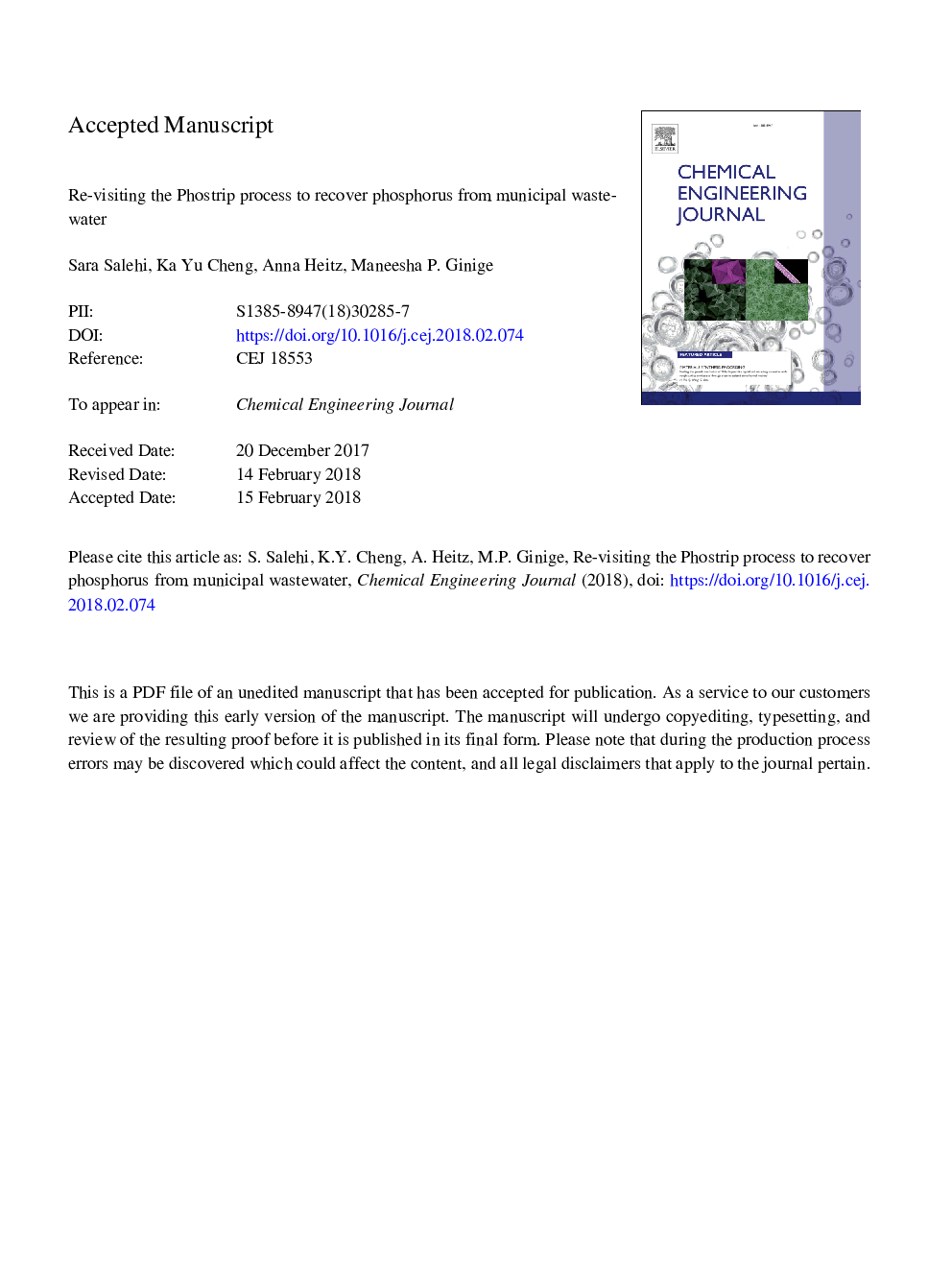| Article ID | Journal | Published Year | Pages | File Type |
|---|---|---|---|---|
| 6579686 | Chemical Engineering Journal | 2018 | 30 Pages |
Abstract
This study examined an innovative approach to make use of the Phostrip process to recover phosphorus (P) from municipal wastewater. Returned activated sludge (RAS) from a municipal wastewater treatment plant was systematically studied to examine P release kinetics of RAS in a recovery stream that contained high concentrations of phosphate (PO43â-P). Findings suggested that the specific P release rate in RAS declined with increasing concentration of PO43â-P in the recovery stream. However, there was a strong positive linear correlation between acetate consumed and P released by the RAS (Pearson product-moment correlation coefficient [râ¯=â¯0.98, nâ¯=â¯45, pâ¯<â¯0.005]). The data also suggest that acetate concentration in the recovery stream was not a factor in the observed reduction of specific P release rate with increasing PO43â-P in the recovery stream. When P release rates (poly-P hydrolysis rate) at different initial P concentrations were modelled using a modified Michaelis-Menten equation, a good fit was achieved between the experimental and the modelled data. According to the model, the maximum specific P release rate (18â¯mg-P/g-MLSS.h) halved when PO43â-P concentration in the recovery stream reached approximately 83â¯mg-P/L. Additionally, the RAS demonstrated a Prelease/Cacetate uptake molar ratio of approximately 0.5. An application of the derived P release kinetics into an innovative side stream process configuration showed that a Phostrip tank with a small footprint (9 m3) is sufficient to facilitate P recovery from a wastewater treatment plant that receives 61 ML/d of influent.
Related Topics
Physical Sciences and Engineering
Chemical Engineering
Chemical Engineering (General)
Authors
Sara Salehi, Ka Yu Cheng, Anna Heitz, Maneesha P. Ginige,
